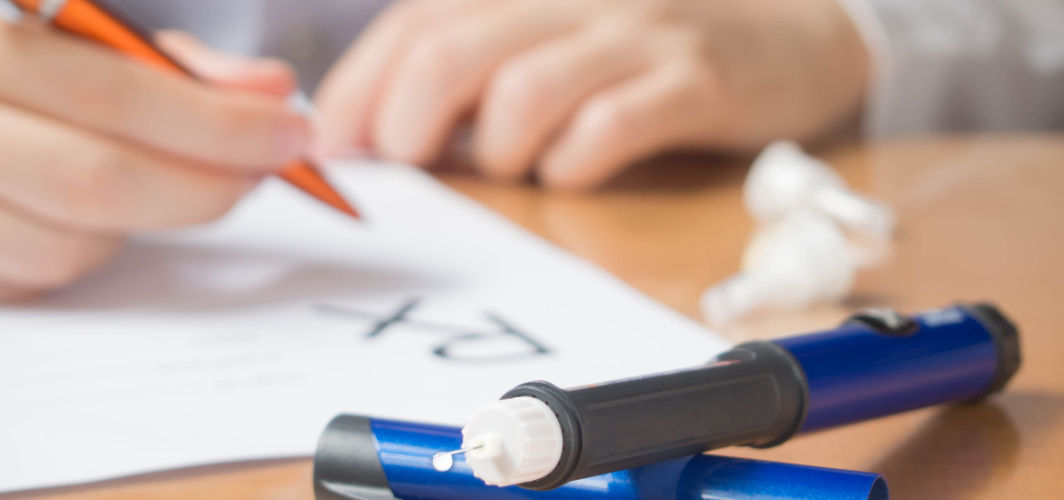Diabetes Management
Explained: The Diabetes and Heart Disease Link
5 min read
By Apollo 24/7, Published on - 18 November 2020, Updated on - 10 August 2023
Share this article
1
7 likes

Why does diabetes increase the risk of heart disease?
- In people with high blood sugar, the glucose attaches to the haemoglobin and disrupts the proper distribution of oxygen throughout the body.
- Diabetes leads to the formation of clumps of LDL (“bad”) cholesterol, leading to the build-up of fatty deposits.
- Diabetes causes fatty acids to be produced, which can destroy proteins in the blood vessels.
- Diabetes causes inflammation and blockage of blood vessels, a condition called atherosclerosis, which in turn leads to heart problems.
Major conditions in diabetes patients that cause heart problems
- Hypertension (High blood pressure): Hypertension is a condition that increases the force of blood pushing against the walls of the arteries (blood vessels). When the blood pressure is consistently high, it causes damage to the artery walls. Having both high blood pressure and diabetes can have a damaging effect on the heart.
- High cholesterol: Elevated levels of LDL cholesterol in the bloodstream can lead to the formation of plaque on the damaged artery walls. Plaque refers to fatty deposits composed of cholesterol and fatty substances. These plaques can harden over time, causing the narrowing of the arteries.
- High triglycerides: Triglycerides are a type of fat in the blood. Increased triglycerides, combined with low HDL or “good” cholesterol, or high LDL or “bad” cholesterol, are associated with hardening of the arteries or thickening of the artery walls.
Heart care in people with diabetes
Taking care of the heart is important for people living with diabetes. Lifestyle changes not only help to manage diabetes but can also lower the risk of heart diseases.
- Following a healthy diet: Include fresh fruits and vegetables, whole grains, and lean protein. People with diabetes must limit or avoid processed foods and foods rich in trans-fats.
- Maintaining a healthy weight: Even a modest weight loss of 5% to 7% of the total body weight is shown to improve blood pressure, blood cholesterol, and blood sugar levels in diabetic people.
- Being physically active: Physical activity is shown to increase insulin sensitivity, which helps to keep blood sugar levels stable.
- Managing the ABCs: Knowing and controlling the ABCs of diabetes, as recommended by the American Diabetes Association, are essential to staying healthy
- A, for A1c test. Haemoglobin A1C (HbA1c) test is a blood test to measure the average blood sugar levels over the last 3 months. Patients with diabetes should aim to keep the A1c levels less than 7%.
- B, for Blood pressure. Doctors recommend that people with diabetes must measure their blood pressure often, with a goal of keeping it below 140/90 mmHg.
- C, for Cholesterol. Since patients with diabetes have an increased risk of cholesterol-related problems, the goal should be to lower LDL cholesterol (bad) and increase HDL cholesterol (good) levels.
- S, for stopping Smoking. Nicotine in tobacco reduces the oxygen supply to the heart, raises blood pressure, increases heart rate, and harms the blood vessels.
- Managing stress: Stress can increase blood pressure and can lead to overeating and excessive alcohol intake. One should try meditating or deep breathing and get some physical activity to reduce stress levels. If you need professional help in managing stress, you can consult with our top psychologists near you.
Conclusion
Diabetes Management
Leave Comment
Recommended for you

Diabetes Management
How To Prevent Diabetes During Pregancy?
Learn about effective strategies and lifestyle factors to prevent diabetes during pregnancy. Discover the latest guidelines, new technologies and expert advice on managing gestational diabetes.

Diabetes Management
Five Essential Tips for Diabetes Self-Management
Managing diabetes effectively involves regular blood sugar monitoring, a balanced diet, exercise, medication adherence, stress management, and self-care. These five essential tips empower individuals to take control of their diabetes, whether it's Type 1, Type 2, or Gestational Diabetes. By monitoring blood sugar levels, understanding dietary choices, staying active, adhering to prescribed medications, and managing stress, individuals can lead healthier, happier lives with reduced complications. Diabetes management requires dedication, but the improved health outcomes make it a worthwhile effort.

Diabetes Management
Your 5 Favorite Sweets and Their Healthier Alternatives
During festive seasons, savouring sweets is a cherished tradition. However, for those managing diabetes or pursuing a healthier lifestyle, enjoying traditional sugar-laden treats might not be ideal. Whole wheat gulab jamun, baked jalebi, brown rice pudding ( brown rice kheer), cottage cheese (paneer) rasgulla, and sugar-free barfi are a few healthier options that can be consumed without spiking your blood sugar levels. By making simple yet smart ingredient substitutions like whole grains, sugar substitutes, and alternative preparation methods, you can relish your beloved festive treats.
Subscribe
Sign up for our free Health Library Daily Newsletter
Get doctor-approved health tips, news, and more.
Visual Stories

8 Fruits That are Incredibly Healthy for Diabetes
Tap to continue exploring
Recommended for you

Diabetes Management
How To Prevent Diabetes During Pregancy?
Learn about effective strategies and lifestyle factors to prevent diabetes during pregnancy. Discover the latest guidelines, new technologies and expert advice on managing gestational diabetes.

Diabetes Management
Five Essential Tips for Diabetes Self-Management
Managing diabetes effectively involves regular blood sugar monitoring, a balanced diet, exercise, medication adherence, stress management, and self-care. These five essential tips empower individuals to take control of their diabetes, whether it's Type 1, Type 2, or Gestational Diabetes. By monitoring blood sugar levels, understanding dietary choices, staying active, adhering to prescribed medications, and managing stress, individuals can lead healthier, happier lives with reduced complications. Diabetes management requires dedication, but the improved health outcomes make it a worthwhile effort.

Diabetes Management
Your 5 Favorite Sweets and Their Healthier Alternatives
During festive seasons, savouring sweets is a cherished tradition. However, for those managing diabetes or pursuing a healthier lifestyle, enjoying traditional sugar-laden treats might not be ideal. Whole wheat gulab jamun, baked jalebi, brown rice pudding ( brown rice kheer), cottage cheese (paneer) rasgulla, and sugar-free barfi are a few healthier options that can be consumed without spiking your blood sugar levels. By making simple yet smart ingredient substitutions like whole grains, sugar substitutes, and alternative preparation methods, you can relish your beloved festive treats.